 | TODAY IN SCIENCE HISTORY
NEWSLETTER - 21 NOVEMBER |
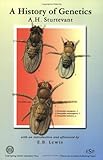 On 21 Nov 1891, Alfred Sturtevant was born, the American geneticist who developed a technique for mapping the location of specific genes of the chromosomes of a fruit fly. In the small “Fly Room” at Columbia University, T.H. Morgan and his students, A.H. Sturtevant, C.B. Bridges, and H.J. Muller, carried out the work that laid the foundations of modern, chromosomal genetics. Today's Science Store pick is: A History of Genetics, by A.H. Sturtevant available as a new reprint of his 1965 account of the excitement of the early times when the whole field of genetics was being created. A first hand story from Morgan's favorite student. He was there! His account is one of the few authoritative works on the early history of genetics. It is available New from $10.98. Used from $5.00. (As of time of writing.). On 21 Nov 1891, Alfred Sturtevant was born, the American geneticist who developed a technique for mapping the location of specific genes of the chromosomes of a fruit fly. In the small “Fly Room” at Columbia University, T.H. Morgan and his students, A.H. Sturtevant, C.B. Bridges, and H.J. Muller, carried out the work that laid the foundations of modern, chromosomal genetics. Today's Science Store pick is: A History of Genetics, by A.H. Sturtevant available as a new reprint of his 1965 account of the excitement of the early times when the whole field of genetics was being created. A first hand story from Morgan's favorite student. He was there! His account is one of the few authoritative works on the early history of genetics. It is available New from $10.98. Used from $5.00. (As of time of writing.). |  On 21 Nov 1953, the 40-year-long hoax of the Piltdown Man ended when scientists presented convincing evidence that the intriguing Piltdown skull was faked. The purported fossil fragments had long caused excitement because they seemed to represent a species of early human who had lived in England a million years ago - the “missing link” between apes and modern man. Today's Science Store pick is: The Piltdown Forgery, by J. S. Weiner. Widely praised from its first publication in 1955, this book remains the classic account of this fraud, its many players, and how it was exposed A new introduction is added for this this fiftieth anniversary edition, and an afterword containing the latest detective-work. It is available New from $17.92. Used from $0.01. (As of time of writing.). On 21 Nov 1953, the 40-year-long hoax of the Piltdown Man ended when scientists presented convincing evidence that the intriguing Piltdown skull was faked. The purported fossil fragments had long caused excitement because they seemed to represent a species of early human who had lived in England a million years ago - the “missing link” between apes and modern man. Today's Science Store pick is: The Piltdown Forgery, by J. S. Weiner. Widely praised from its first publication in 1955, this book remains the classic account of this fraud, its many players, and how it was exposed A new introduction is added for this this fiftieth anniversary edition, and an afterword containing the latest detective-work. It is available New from $17.92. Used from $0.01. (As of time of writing.). | | For picks from earlier newsletters, see the Today in Science History Science Store home page. | |
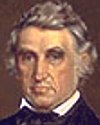 | I submit a body of facts which cannot be invalidated. My opinions may be doubted, denied, or approved, according as they conflict or agree with the opinions of each individual who may read them; but their worth will be best determined by the foundation on which they rest�the incontrovertible facts. - William Beaumont, American army surgeon (born 21 Nov 1785).  |
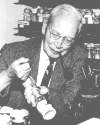 | There is a reference in Aristotle to a gnat produced by larvae engendered in the slime of vinegar. This must have been Drosophila. - Alfred Henry Sturtevant, American geneticist (born 21 Nov 1891).  |
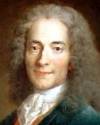 | Men who are occupied in the restoration of health to other men, by the joint exertion of skill and humanity, are above all the great of the earth. They even partake of divinity, since to preserve and renew is almost as noble as to create. - Francois Marie Arouet Voltaire, French author (born 21 Nov 1694).  |
| Before you look at today's web page, see if you can answer some of these questions about the events that happened on this day. Some of the names are very familiar. Others will likely stump you. Tickle your curiosity with these questions, then check your answers on today's web page. |
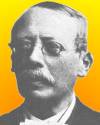 | Hieronymus Theodor Richter, born 21 Nov 1824, was a German mineralogist who in 1863 was a co-discoverer of a new element present in samples of an ore. When he placed some of the sample in a loop of platinum wire and heated it in the flame of a Bunsen burner, he observed a brilliant indigo line characteristic of this as a new element.
 Which element did he co-discover? |
 | William Beaumont, born 21 Nov 1785, was an American army surgeon who was the first person to observe and study human digestion as it occurs in the stomach. A wounded soldier he treated healed except for a permanent opening into his stomach from the outside, through which Beaumont was able to sample gastric secretions.
 What did Beaumont indentify as the principal agent in gastric juice? |
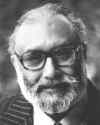 | Abdus Salam (1926-1996) was a Pakistani nuclear physicist who shared the 1979 Nobel Prize for Physics. He had independently formulated a theory explaining the underlying unity of two of the fundamental forces. One of these, he postulated, must be transmitted by hitherto-undiscovered particles known as W and Z bosons.
 To which two fundamental forces did his theory relate? |
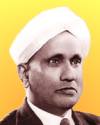 | Sir Chandrasekhara Venkata Raman (1888-1970) was influential in the growth of science in India. He was the recipient of the 1930 Nobel Prize for Physics for the 1928 discovery now known by his name.
 What effect is known by Raman's name? |
 | On 21 Nov of a certain year, Jean Francois Pil�tre de Rozier and the Marquis Fran�ois Laurant d'Arlandes, made the first flight in a balloon from the royal palace at La Muettte, Paris. They flew 25 minutes, reaching an altitude of around 300 feet, and landed nearly 6 miles away.
 In what decade did this flight take place? |
When you have your answers ready to all the questions above, you'll find all the information to check them, and more, on the November 21 web page of Today in Science History. Or, try this link first for just the brief answers.
Fast answers for the previous newsletter for November 20: elliptical, spiral, and irregular • the first air pump and used it to study the phenomenon of vacuum • a device that separates atoms or molecular fragments of different mass and measures those masses • Joseph Stalin • decade containing the year 1861 • automatic traffic signal (which was not traffic lights). |
 If you enjoy this newsletter, the website, or wish to offer encouragement or ideas, please send feedback by using your mail reader Reply button. If you enjoy this newsletter, the website, or wish to offer encouragement or ideas, please send feedback by using your mail reader Reply button.
Your click on a StumbleUpon, Google+ or Facebook social button on the site webpages is also a welcome sign of appreciation. Thank you for using them. |
To find citations for quotations go to the corresponding webpage by clicking on the “quotes” balloon icon. Sources for the thumbnails appear on today's webpage with the corresponding item.
� This newsletter is copyright 2013 by todayinsci.com. Please respect the Webmaster's wishes and do not put copies online of the Newsletter � or any Today in Science History webpage. (If you already have done so, please remove them. Thank you.) Offline use in education is encouraged such as a printout on a bulletin board, or projected for classroom viewing. Online, descriptive links to our pages are welcomed, as these will provide a reader with the most recent revisions, additions and/or corrections of a webpage. For any other copyright questions, please contact the Webmaster by using your mail reader Reply button. |
--
If you do not want to receive any more newsletters,
Unsubscribe To update your preferences and to unsubscribe visit
this link 






 Which element did he co-discover?
Which element did he co-discover? 
 What did Beaumont indentify as the principal agent in gastric juice?
What did Beaumont indentify as the principal agent in gastric juice? 
 To which two fundamental forces did his theory relate?
To which two fundamental forces did his theory relate? 
 What effect is known by Raman's name?
What effect is known by Raman's name? 
 In what decade did this flight take place?
In what decade did this flight take place?  If you enjoy this newsletter, the website, or wish to offer encouragement or ideas, please send feedback by using your mail reader Reply button.
If you enjoy this newsletter, the website, or wish to offer encouragement or ideas, please send feedback by using your mail reader Reply button. 


Δεν υπάρχουν σχόλια:
Δημοσίευση σχολίου